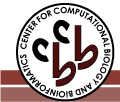| General information | | DisProt: | DP00553 | | Name: | Neuroligin-3 [Isoform 1 (HNL3s)] | | Synonym(s): | NLGN3_HUMAN
Gliotactin homolog
| | First appeared in release: | Release 3.8 (05/27/2008) | | UniProt: | Q9NZ94-1 | | UniGene: | Hs.438877 | | SwissProt: | NLGN3_HUMAN | | TrEMBL: | | | NCBI (GI): | 31076855 | | Source organism: | Homo sapiens (Human) | | Sequence length: | 848 | | Percent disordered: | 14% | | Homologues: | |
| Native sequence |
10 20 30 40 50 60
| | | | | |
MWLRLGPPSL SLSPKPTVGR SLCLTLWFLS LALRASTQAP APTVNTHFGK LRGARVPLPS - 60
EILGPVDQYL GVPYAAPPIG EKRFLPPEPP PSWSGIRNAT HFPPVCPQNI HTAVPEVMLP - 120
VWFTANLDIV ATYIQEPNED CLYLNVYVPT EDVKRISKEC ARKPNKKICR KGGSGAKKQG - 180
EDLADNDGDE DEDIRDSGAK PVMVYIHGGS YMEGTGNMID GSILASYGNV IVITLNYRVG - 240
VLGFLSTGDQ AAKGNYGLLD QIQALRWVSE NIAFFGGDPR RITVFGSGIG ASCVSLLTLS - 300
HHSEGLFQRA IIQSGSALSS WAVNYQPVKY TSLLADKVGC NVLDTVDMVD CLRQKSAKEL - 360
VEQDIQPARY HVAFGPVIDG DVIPDDPEIL MEQGEFLNYD IMLGVNQGEG LKFVEGVVDP - 420
EDGVSGTDFD YSVSNFVDNL YGYPEGKDTL RETIKFMYTD WADRDNPETR RKTLVALFTD - 480
HQWVEPSVVT ADLHARYGSP TYFYAFYHHC QSLMKPAWSD AAHGDEVPYV FGVPMVGPTD - 540
LFPCNFSKND VMLSAVVMTY WTNFAKTGDP NKPVPQDTKF IHTKANRFEE VAWSKYNPRD - 600
QLYLHIGLKP RVRDHYRATK VAFWKHLVPH LYNLHDMFHY TSTTTKVPPP DTTHSSHITR - 660
RPNGKTWSTK RPAISPAYSN ENAQGSWNGD QDAGPLLVEN PRDYSTELSV TIAVGASLLF - 720
LNVLAFAALY YRKDKRRQEP LRQPSPQRGA GAPELGAAPE EELAALQLGP THHECEAGPP - 780
HDTLRLTALP DYTLTLRRSP DDIPLMTPNT ITMIPNSLVG LQTLHPYNTF AAGFNSTGLP - 840
HSHSTTRV
|
| Functional narrative |
The neuroligins are a set of neuronal adhesion proteins belonging to the family of cholinesterase-like adhesion molecules. Neuroligin 3 is a neuronal cell surface protein which is thought to be involved in cell-cell interactions by forming intercellular junctions through binding to beta-neurexins. It may play a role in formation or maintenance of synaptic junctions and also in glia-glia or glia-neuron interactions in the developing peripheral nervous system.
|
| Map of ordered and disordered regions |


Note: 'Mouse' over a region to see the start and stop residues. Click on a region to see detailed information.
|
| Region 1 | | Type: | Disordered | | Name: | intracellular domain | | Location: | 731 - 848 | | Length: | 118 | | Region sequence: |
YRKDKRRQEPLRQPSPQRGAGAPELGAAPEEELAALQLGPTHHECEAGPPHDTLRLTALP
DYTLTLRRSPDDIPLMTPNTITMIPNSLVGLQTLHPYNTFAAGFNSTGLPHSHSTTRV | | Modification type: | Fragment
| | PDB: | | | Structural/functional type: | Function arises from the disordered state
| | Functional classes: | Molecular assembly
| | Functional subclasses: | Protein-protein binding
| Detection methods:
- Sensitivity to proteolysis (298 K; pH: 8; NaCl 50 mM; Tris 100 mM; proteinase K 50 ng/ml; hNL3-cyt 0.125 mg/ml)
- Size exclusion/gel filtration chromatography (pH: 8.5; DTT 5 mM; EDTA 1 mM; hNL3-cyt 10 mg/ml; NaCl 250 mM; Tris 100 mM; (Urea) 8 M)
- Analytical ultracentrifugation (293 K; pH: 8; hNL3-cyt 0.3 mg/ml; PBS)
- Small-angle X-ray scattering (SAXS)
- Circular dichroism (CD) spectroscopy, far-UV (pH: 7; hNL3-cyt 0.19 mg/ml; potassium phosphate 10 mM)
- Nuclear magnetic resonance (NMR) (298 K; pH: 6; 15N/13C-labeled protein 1 mM; DTT 5 mM; potassium phosphate 20 mM; sodium azide)
- Dynamic light scattering (pH: 8.5; DTT 5 mM; EDTA 1 mM; hNL3-cyt 1 mg/ml; NaCl 250 mM; Tris 100 mM)
| References:
- Paz A, Zeev-Ben-Mordehai T, Lundqvist M, Sherman E, Mylonas E, Weiner L, Haran G, Svergun D, Mulder F, Sussman J, Silman I. "Biophysical characterization of the unstructured cytoplasmic domain of the human neuronal adhesion protein neuroligin 3." Biophys J. 2008; 95(4): 1928-44. PubMed: 18456828
| Comments:
|
| References |
- Budreck EC, Scheiffele P. "Neuroligin-3 is a neuronal adhesion protein at GABAergic and glutamatergic synapses." Eur J Neurosci. 2007; 26(7): 1738-48. PubMed: 17897391
- Otten R, Wood K, Mulder FA. "Comprehensive determination of (3)J (HNHalpha) for unfolded proteins using (13)C'-resolved spin-echo difference spectroscopy." J Biomol NMR. 2009. PubMed: 19898942
|
| If you have any comments or wish to provide additional references to this protein or its disordered region(s), please click here to e-mail us. |
Disprot-footer
|










